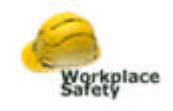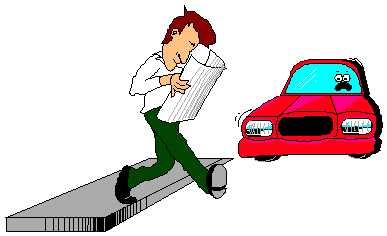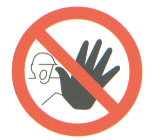|
SAFed Health and Safety Passport Scheme |
||||||||||||
|
Module 5 — Workplace Safety — Access and egress |
||||||||||||
| 5.1 Introduction | ||||||||||||
|
||||||||||||
| The SAFed Health and Safety Passport is issued to Engineer Surveyors by the Health and Safety Manager of their employing company upon satisfactory completion of the Safety Passport final assessment. | ||||||||||||
|
The
award of the SAFed Health and Safety Passport provides evidence that the
holder of the Passport has the appropriate knowledge and awareness in
health and safety matters considered necessary for an Engineer Surveyor
to undertake the duties for which they are authorised by their employing
company.
The passport is valid for a maximum of three years. |
||||||||||||
| 5.2 Key Objectives | ||||||||||||
|
Having studied this module you should have an awareness of · Legislation applicable to Workplace Safety. · Precautions necessary during access and egress. This module is specifically focussed on workplace safety with respect to access and egress from sites that you will visit as part of your normal duties. |
||||||||||||
|
5.3
Legal commentary The following regulations ensure that workplaces meet the health, safety and welfare needs of all members of a workforce. On clients sites this becomes a shared responsibility between you, your employer and the clients’ employers. The Health & Safety at Work etc. Act 1974. The Workplace (Health, Safety & Welfare) Regulations 1992. The Management of Health & Safety at Work Regulations 1999. |
||||||||||||
|
5.4
Discussion Safe access to and egress from your work site is to ensure that you are not exposed to any danger, and once this safe access and egress has been provided, you are responsible for your own health and safety. It is very much up to you to keep them that way. Most injuries to field staff occur as a result of slips trips and falls whilst gaining access to make inspections or during egress at the completion of inspections. A common cause of injury is also trapping. |
||||||||||||
|
5.5
Workplace Safety — Access and Egress You cannot expect to meet ideal conditions at all times, therefore you must take care when moving around particularly in new or changing situations. Examples of hazards to look out for include: |
||||||||||||
|
||||||||||||
|
The nature of an Engineer Surveyors work is
such that the person who can do most for your health and safety is
yourself. There is a
statutory obligation on you to work safely and to ensure that your work
does not adversely affect the health and safety of others.
There is also a responsibility on you to comply with all health
and safety rules at the sites you visit. Our industry requires you to work, at
times, under conditions that may be regarded as hazardous in order that
the normal user of the equipment being inspected will be safe.
Nevertheless, on rare occasions you may find the safety
arrangements laid on by the client to be inadequate.
In these circumstances you should take the matter up with the
person in charge in order to improve the situation.
Clients must provide suitable safe access. If they don’t we don’t expose ourselves to danger. If the action taken is nil or not sufficient to reduce the risk to your health and safety you should then contact your line manager before proceeding with your inspection. We do not want you, or any of our staff, to receive an injury or to suffer a risk to health whilst at work. |
||||||||||||
|
5.5.1
Evacuation Procedures Evacuation procedures are there to ensure
that you can get out of your place of work safely and quickly especially
in the case of ‘serious and imminent danger’.
You need a safe way in and particularly a safe way out in an
emergency. Every site should tell you about specific
safety rules and procedures that are in place including how to activate
alarms, what the alarms sound like and what they mean, the location of
muster points, details of all escape routes, the site emergency phone
number and the location of all first aid points. Your safety passport course will enabled
you to grasp the general principles of safety however induction courses
are necessary for you to learn that particular sites safety rules and
procedures Muster Points: These may also be known as assembly points and are used for carrying out a head count to see who may be left behind. Typically this would include a Roll call being carried out by a nominated marshal.
|
||||||||||||
|
||||||||||||
| Security: Many sites use various forms of ‘Pass systems’ to prevent unauthorised access, and to help identify who may be onsite during emergencies. Typically, when arriving on site, you would identify yourself at the site gatehouse or security office, sign in and collect some form of security pass which you personally must return as you leave. | ||||||||||||
|
Actions
in Case of an Emergency: ·
Make your job safe. ·
Go quickly, without running, to you muster / assembly
point and give your name to the marshal. ·
Do not return until told that it is safe to do so by the
marshal. ·
Do not attempt to use lifts. · Use only the normal routes — follow the ‘white on green square’ arrows if you find your way blocked there will be other routes |
||||||||||||
|
||||||||||||
|
Emergency routes and exits should: ·
Lead as directly as possible to the open air away from the
workplace or to a safe area. ·
Be adequate for the type of workplace and the people
likely to be in it. ·
Be able to be quickly and safely used in the event of a
power failure. Escape
route and emergency doors: Whilst the workplace is in use, doors on escape routes should not be so locked or fastened that they cannot easily and immediately be opened from the inside. Where the risks require it, emergency doors must open outwards |
||||||||||||
|
||||||||||||
|
||||||||||||
|
5.5.5
Working Alone There are
occasions when, by choice or due to circumstances, you will be in a
position where you are working alone, and in these instances safety
must be your overriding consideration. To safeguard
yourself, certain actions should always be taken to ensure that you
will be missed in the event of an accident. Such actions
include: ·
Advising the family at home where you are going that
day, approx what times you will be there, who to contact and when you
expect to return. ·
If the situation is remote and where keys have to be
obtained, impress on the key holder how long you will be and if
possible try to return the keys to the key holder rather than leaving
them to be collected or pushing them through a letter box. ·
If there is no one of authority or any responsible
person at the particular location try to make your presence known so
that some one is aware you are on the premises. ·
If that is not practicable leave a door open, park your
car in a prominent position, leave a light on or devise some other
means to ensure that enquiries will be made should you still be at the
location. ·
Set up pre-arranged call times with a member of your
family, a friend or someone connected with the job by using a mobile
phone to so that investigations will be started if no contact is made
- however remember to make sure you have a phone signal first. ·
Contacting a responsible person on arrival and advising
them who you are, what you are there for and how long you will be
there on the premises. This
should be always undertaken at all sites because: a)
Professional courtesy to client. b)
To learn any site specific risks — this could be identity of
dangerous areas or operation that is underway such as chemical
cleaning, building work or some other activity which you need to be
aware of. c)
To obtain work permit if required. d)
To enable you to comply with any in-house requirements — may
be that you need to leave matches, lighters, mobile phones at the
gatehouse. e)
To enable you to comply with local fire and evacuation
procedures. f)
Advise them that you may be working alone. g)
Remember to sign out on completion. The list above may not all be applicable but judgements and experience will always be your safeguards in protecting yourself. Remember that lone working does not always mean working in a remote location, it may mean remote from assistance. If unsure don’t do it ! |
||||||||||||
|
5.5.6
Vehicles on Site There are basic
rules that should always be followed when driving vehicles on site: ·
You must have a current licence to drive them. ·
Park them so as not to block access ways — do not park
in restricted areas. ·
Always check what the site speed limit is and stick
rigidly to it. ·
Inside buildings this speed limit could be as low as 5 mph
— crawl with all your lights on as people do not expect to see
vehicles indoors. ·
Wear your seat belt — accidents still occur when you are
travelling slowly. ·
Be observant and considerate. ·
Watch out for pedestrians and always give them the right
of way. · Mobile phones should not be used |
||||||||||||
|
|
||||||||||||
|
Transport
Accidents occur because: ·
Contact — with structures and services. ·
Overturning — through incorrect loading, speeding,
surface conditions. ·
Collision — with other vehicles or pedestrians. ·
Impact — materials falling or the vehicle overturning
onto the operator. ·
Entanglement — in dangerous parts of machinery or
controls. ·
Explosion — when charging batteries or inflating tyres. ·
Operator/supervisor error — through inadequate training
or experience. These accidents are preventable by the use of a planned approach including: |
||||||||||||
|
·
Driver selection based on an evaluation of age,
experience, driving record and attitude. ·
Training & certification of all drivers covering
company driving rules and what to do in the event of an accident. ·
Supervision must be in place to ensure that all vehicle
drivers engage in safe practices. ·
Prevent unauthorised persons using vehicles. · Control of visiting drivers through a detailed induction process and the provision of suitable traffic safety signs or markers |
||||||||||||
|
||||||||||||
| Floors and traffic routes should be sound and strong enough for the loads placed on them and the traffic expected to use them. The surfaces should not have holes, be uneven or slippery and should be kept free of obstructions. | ||||||||||||
|
||||||||||||
| Additional measures need to be taken where pedestrians have to cross or share vehicle routes. These may include marking of routes, provision of crossing points, bridges, subways and barriers. Loading bays should have at least one exit point from the lower level or a refuge should be provided to avoid people being struck or crushed by vehicles. | ||||||||||||
|
5.6
End of module and next steps Well done!
By reaching this point you will have finished studying this
particular module. You
should know have sufficient knowledge to answer the questions contained
at the end of the module. Answers to
the questions should be forwarded to your Health and Safety Manager. |
||||||||||||
| Click here to answer question on Module 5 |








